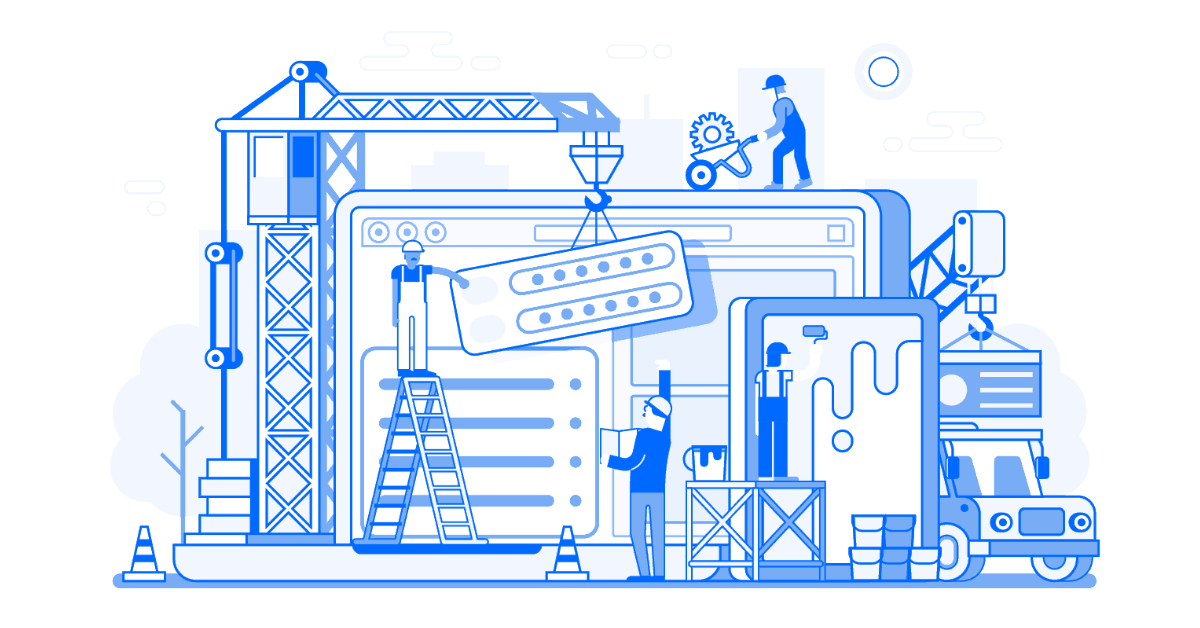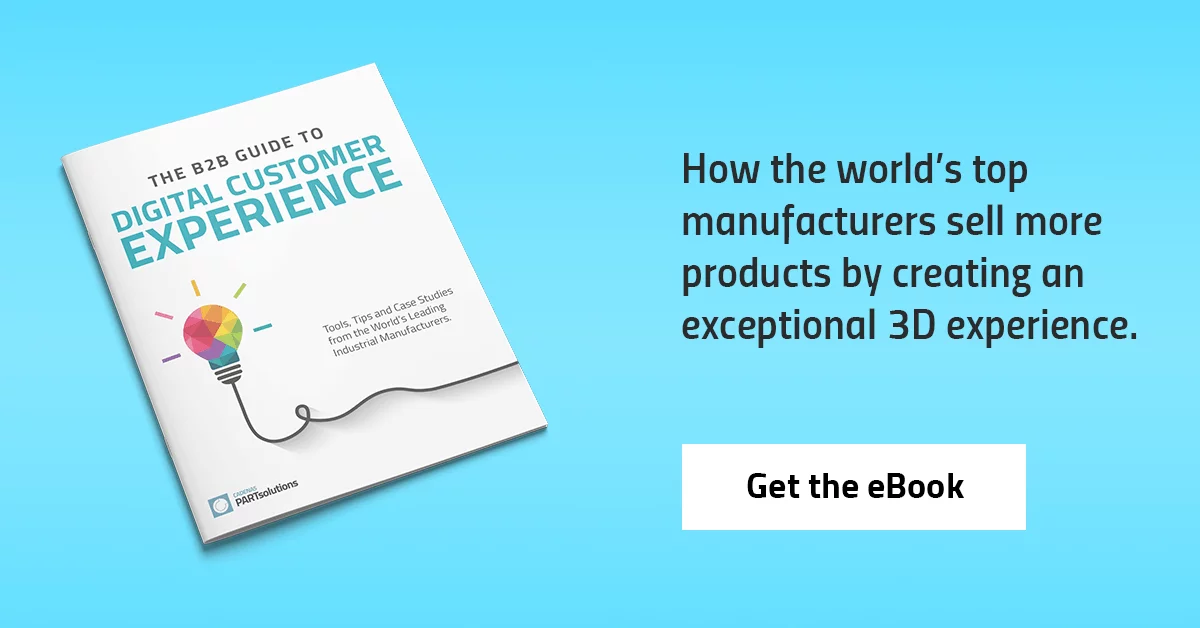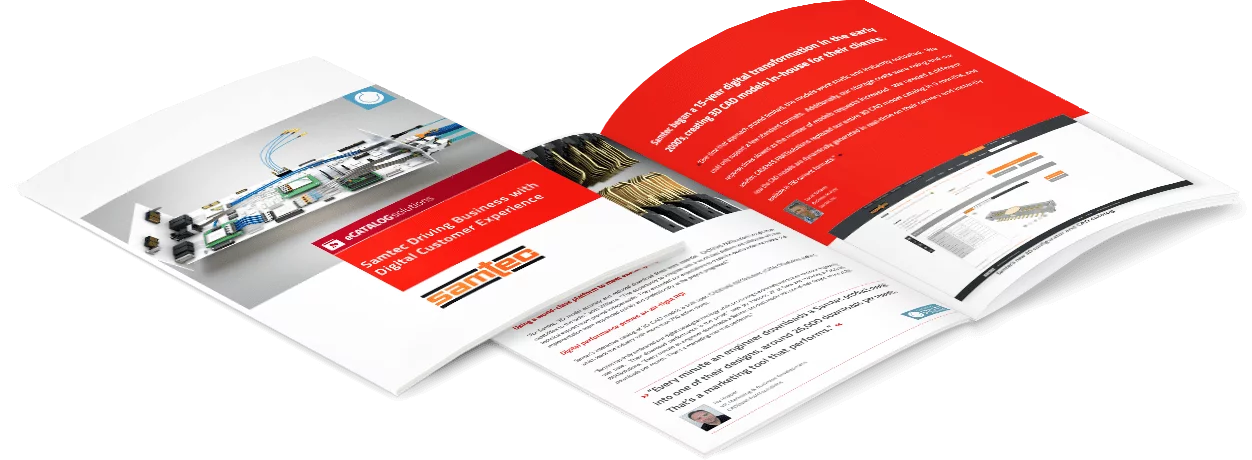How Manufacturers Can Optimize Their Website Design for Customer Experience & Product Sales
Give engineers, architects and planners the online experience they want and the 3D part content they need.
You want to un-complicate your website, so why is that so… complicated?
The truth is, there’s a ton of information manufacturers have to know about website design and best practices before they can launch a new website (or just optimize it for more sales). If you’re considering redesigning (or re-optimizing) your website to sell more components, you must consider:
- How customers are coming to your website
- What they expect to see when they get there
- What information and 3D part content will be available
- How easy is it to navigate to your products
And that’s just scratching the surface. Google, your website server, plugins, and other digital software you use all come into play. What was once a 2-month design project with one freelancer can quickly spiral into a +6-month process that turns the tables on all your other marketing and sales initiatives.
Despite the challenges, optimizing your website for digital customer experience is essential to a profitable business that sells 3D part content online.
How to drive inbound leads online: Optimize your website to drive inbound leads with the #1 tool for small manufacturers.
Before you dive into this giant project, stop and make a plan. We’re seeing more manufacturers taking on this project, so we want to help them do it successfully. (We also launched a website redesign last year and learned several do’s – and don’ts – along the way!)
Here’s what every manufacturer needs to consider before launching a website optimization campaign.
Why Website Design Is Crucial to Online Success
Redesigning your website is a long, tedious and substantial project. Is it worth going to all that trouble? Here are three major reasons why website optimization is a process well worth your time:
1. It’s the #1 factor for engineers when they search for parts online.
We asked engineers what the most important factors to them are when searching for supplier parts online. Coming in at #1 was website design.
80% of engineers agreed that a simple and easy-to-use website was a major factor when determining which supplier parts to purchase.
Don’t just take our word for it. IEEE GlobalSpec’s research also found that a company’s website has a considerable impact on whether engineers think the manufacturer is credible or not.
Engineers, architects and planners all want accurate, easy-to-find product data much more than they need the ability to purchase that part online. Oftentimes, the part downloader is not the person who purchases the part. They just want to find the right part to test into their design and pass that data along to the purchasing department. If they can’t make it past your website’s homepage, your products have a slim shot of ever making it to the purchasing team.
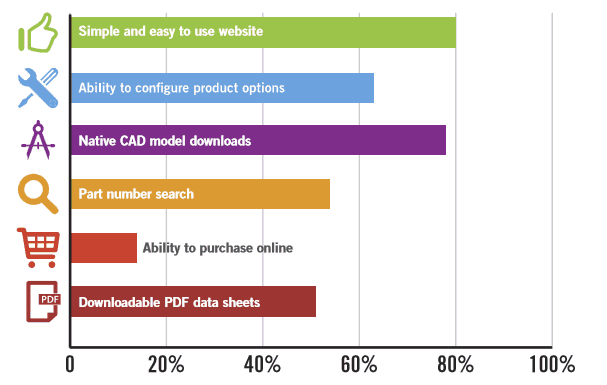
2. An intuitive website design makes it easier for customers to buy from you.
When it comes to website design, assume your visitors have never been to your website before. How clearly does your homepage show where they can find your products? Do you have a direct link to a page where designers can see your content and download it – without logging in?
By providing a clear path to products, engineers can find, download, and test your products into their design in seconds. This ultimately helps your customers do their job better and faster:
- Cut the time it takes your customer to find and specify parts
- improves accuracy by enabling them to test parts into their design
When you make it easy for your customers to do their job, you also make it easier for them to purchase from you. The key here is to un-complicate your website. Being easy to do business with means more customers will return to your website for future sales.
The Ultimate Guide to DCX: Everything you need to know about digital customer experience in the manufacturing industry.
3. Your website design impacts product sales.
You’ve heard the phrase, “Don’t judge a book by its cover.” Yet, every successful, published book went through rounds of meetings with one specific focus: how to design a book cover that sells. The same applies to your website.
Great website designs show immediate value to visitors and spark curiosity, thus giving them a reason to stay. And you don’t have much time to do it: It takes 50 milliseconds (0.05 seconds) for a visitor to form an opinion about your website and decide whether to stay or leave.
Already have an eye-catching home page? Getting more customers to your website and making it pretty are just a few pieces of the puzzle. Their experience thereafter – from load time to ease of navigation – dictates their overall impression of your website and whether or not they make it to purchase.
- 88% of online customers are not likely to return to a website after a bad experience.
- Slow-loading websites cost retailers $2.6 billion in lost sales each year.

What Engineers and Architects Expect from Your Manufacturing Websites
Now that you understand the impact website design has on your product sales, what elements do you need to keep engineers and architects on your website? According to IEEE GlobalSpec research and industry website designers, manufacturers must provide these four essentials:
1. Free access to 3D part content
Type into the Google search bar, “free cad online.” You’ll find hundreds of different portal sites that offer free CAD downloads of supplier parts to engineers. It’s clear that online engineers like “free” and open access to parts for their designs, but what quality content do they really need to do their jobs better?
Engineers’ preferred content types are datasheets, case studies, and product/how-to videos, according to IEEE GlobalSpec research. These pieces of content give the engineer added value he or she needs to complete their designs and send the right product information to the purchasing department.
After all, the people who come to your website looking for parts are not always the ones who return to make the final purchase. Don’t create barriers that stall or complicate the process for the purchasing team.
2. Simple navigation to products
Once on your website, 86% of visitors want to see information about your products and services, according to KoMarketing.
Keep this statistic in mind when you design your home page. Are your products front and center? Do you offer more than one pathway to your products? Do you have high-quality images of your products for customers to see right away?
All these make a difference to ensure the most visitors get to that next step of the buyer’s journey: visiting your product pages.
3. High-quality imagery
If a picture is worth 1,000 words, think of your website’s images as the real story you’re telling your customers. If your images are outdated, small, pixilated or just plain boring, that’s the impression of your brand you leave with visitors as they leave your website.
Most architects are coming to your website to find products. Do you show them the exact product they’re looking for? There’s a big difference between 2D sketches and 2D rendered images. Or, you can take it to the next level by giving them an interactive 3D preview.
Consider what story you’re telling your online customers without your website’s copy. Would they think of your brand and products as the industry’s best?
4. On-demand access to 3D product downloads
Remember when we said that website design was the #1 factor for engineers when they search for parts? Coming in at #2 was native CAD model downloads.
77% of engineers said the ability to get on-demand CAD models in their native format played an important factor when deciding which manufacturer to purchase from. Engineers don’t care as much whether or not they can purchase 3D part content from your website. They need product data, and they need it available to them when they’re searching for it, around-the-clock and on-the-go.
On-demand doesn’t just apply to your products… it’s also about website speed. The time it takes for your website pages to load can have a big impact on customer retention. Even the most beautiful, easiest-to-use website will be rejected if it takes more than 2 seconds to load each page.
If your website lags in load time, first establish the cause. Could it be a slow connection due to your website’s shared server? Slow speed can also be the result of a poorly optimized theme, an overworked plugin and the quantity and quality of files embedded on your site.
Read More: What Engineers Want from Industrial Manufacturers [Checklist]

What Google Expects from a Manufacturer’s Websites
Having a website that meets engineers’ needs is great, but they need to be able to find it in the first place. That means your website must also feed the big beast itself: Google.
Before your customers have gotten to know you and go directly to your website, chances are they googled the parts they needed for their design. If you’re not on the first page – forget it! Your competitors and distributors have already caught their attention and likely won their business. So, how do you get on the first page, and stay there?
1. Follow the algorithm changes.
Back in August 2018, Google made a big change to its algorithm that changed the game for manufacturers. Specifically, Google raised the bar for what it expects to see from websites that sold products or services online. Manufacturers that sold component parts on their websites felt the dramatic impacts of this change.
Companies that complied with Google’s recommendations saw their websites rise in rankings. Conversely, those manufacturers who once held spots at the top of search results slipped to the third or fourth page. Since Google continually updates its algorithm (and may have again since this post was published), the specifics of the changes are moot. The lesson here is this: listen to Google and play by its rules, and you’ll be rewarded in the search results.
2. E-A-T
Remember we said Google raised the bar for websites that sold products or services online? Here’s what you need to know about that.
Google now holds these websites (i.e. component manufacturers) to a higher standard in terms of Expertise, Authority and Trustworthiness. Don’t meet these standards – don’t expect to see yourself on the first page of search results.
Dianna Huff, president of Huff Industrial Marketing, breaks down this methodology in Manufacturing Marketing Magazine. Here are some important takeaways:
- Have an “About Us” and FAQ section on your website
- Include team bios that show people’s expertise
- Publish testimonials and case studies on your site
- Start a campaign to boost your off-site reputation (IQS Directory, Yelp, etc.)
- Include a physical address, general email and phone number
- Make it easy for visitors to access your payment/refund terms and privacy policy
3. Check Google Search Console
The Google Search Console is a free service that helps you monitor and troubleshoot your website’s presence in Google search results.
It’s a communication channel and a control center. If there’s an issue with your website that Google wants you to fix, you find it here. Similarly, the Search Console provides you with tools and insights into how well your website is optimized to appear in search results (aka, Search Engine Optimization). Speaking of SEO…
4. Have a keyword strategy and monitor it.
This is less about what Google wants to see from your website and more about how to get on Google’s good side. Building a keyword strategy not only makes your website better in the eyes of Google but also helps you target which type of customers you’re hoping to draw to your website.
First, create a list of important words and phrases that your customers would type into Google for which you have the solution (or product). By strategically placing these keywords on the right pages of your website, your customers can more easily find your products via Google.
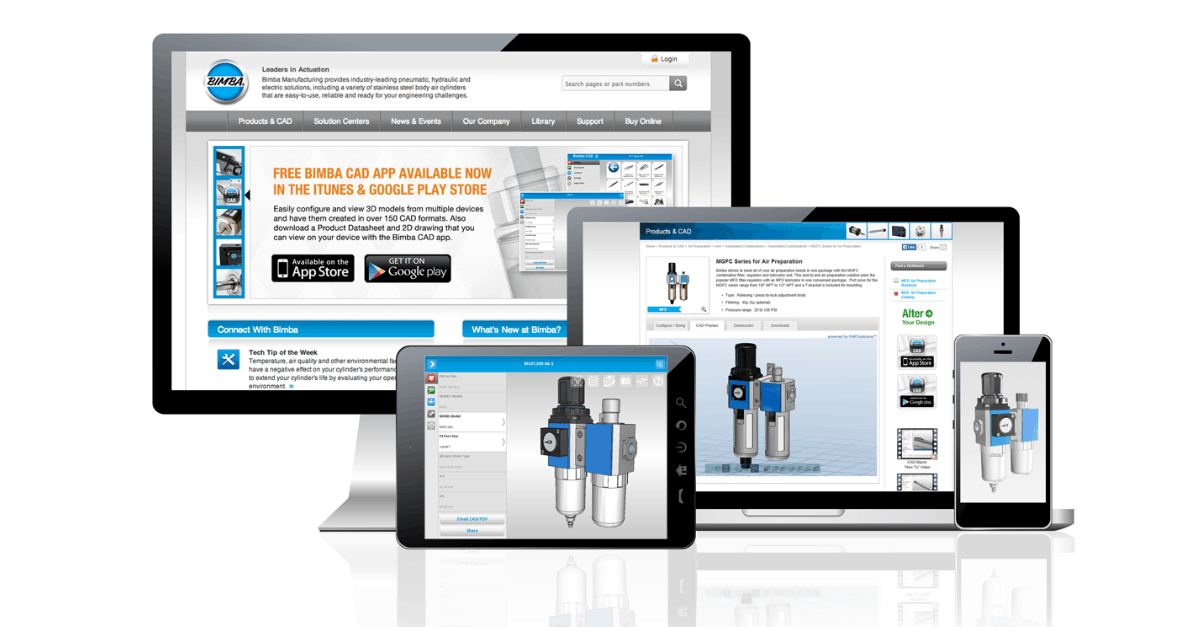
5 Ways for Manufacturers to Improve Their Website Design Around 3D Part Content
Now you’re armed with the valuable insights you need to craft a website that delivers a remarkable digital customer experience. It’s time to put that knowledge to action with these tried-and-true tactics our manufacturing clients have used to boost online product sales.
Below, we’ve outlined the design elements that make it easy for customers to get products fast:
1. Embed a product family-level configurator on your website.
For manufacturers who sell several different types of products, this is essential. Your customer might not care how many different bearings or electrical components you make – he only cares about the one product he needs.
By providing a family-level configurator on your website, your customers can go directly to the product type he needs instead of sifting through all your products. The configurator then lets him choose the right part for his design faster and with more accuracy than a large table of product numbers and specifications.
2. Have a part # look-up or product SKU page.
Give engineers and architects the power to search for the exact product they need with a part number look-up. This takes them directly to the product page in fewer clicks. Remember, the least number of clicks = easier navigation = better online experience.
On the product page, you can also give engineers a 3D preview of the product. Doing this helps your customer verify this is the right product (tpyos happen).
3. Link to 3D part downloads directly from the home page.
For some industries like hydraulics and pneumatic cylinders, having 3D CAD & BIM models is the new standard. Since that’s what engineers are looking for, there’s no reason this shouldn’t be front-and-center on your homepage.
You can give engineers and architects access to CAD and BIM directly from your home page by including a link to your product configurator or family-level configurator. Either way, by adding this to your home page, you’re eliminating an additional step your customers have to take when they get to your website.
4. Include a competitor cross-reference list.
Others might disagree, but including a competitor’s parts as a cross-reference does have benefits to your website’s overall customer experience. 65% of engineers want to search on multiple vendor/distributor websites before talking to a salesperson. By giving the customer a product comparison in one location, you’re making it easier for them to make their decision, and it builds their trust with your company.
Another option is to reference related complementary parts. Component manufacturing has several Romeo-Juliet products: gearbox and motor, belt and pulley, rack and pinion… If you manufacture it, give customers an easy way to get the exact product they need to fit the part they already found.
5. Include your purchasing information in the product metadata.
You don’t want to go through all this work for nothing. Make sure your information and the next steps to purchase are included in the product metadata or 3D product download. You can do this with a product configurator or by following up on downloads with an email asking the downloader if they need any help.
Now that your product is part of the customer’s assembly design, your product information makes it to the purchasing team.
Adam Beck
Latest posts by Adam Beck (see all)
- 2025 Industrial Marketing Summit Announced for February 26-28 in Austin, TX - May 31, 2024
- Engineering the World’s Longest Solar Eclipse - April 9, 2024
- How AR CAD Models and Apple Vision are Helping Engineers Become Tony Stark - March 12, 2024
